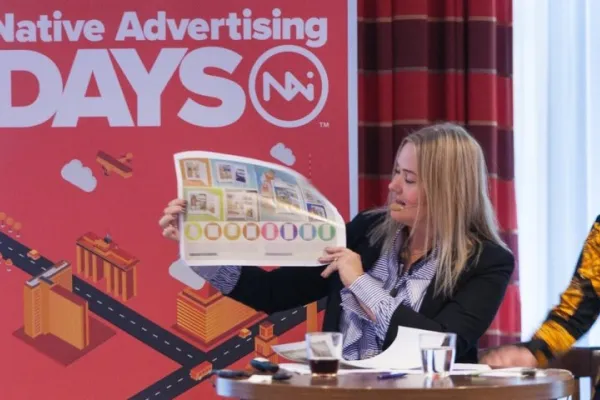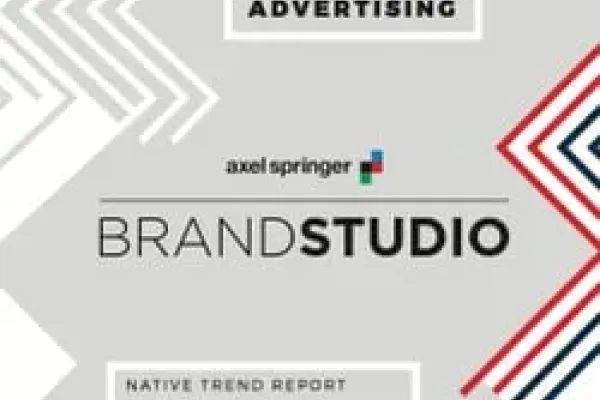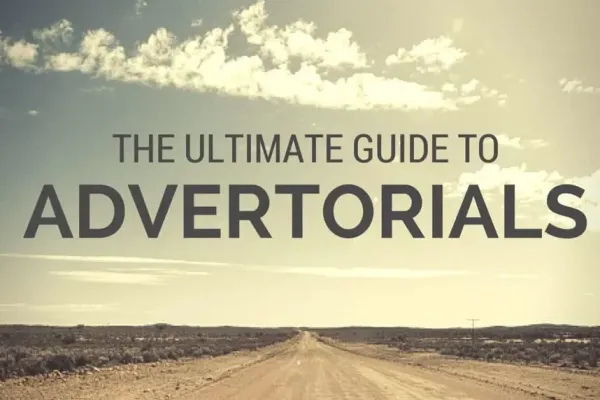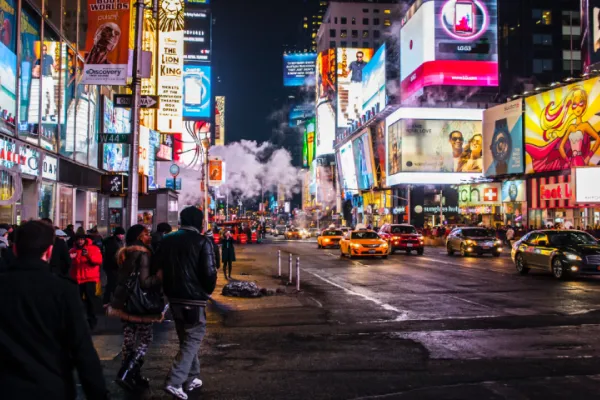
 Details
Details
Native Advertising Days 2018 took place on the 6th and 7th of November in Berlin. The event was sold-out and leading experts from around the world were gathered.
Out of all the keynotes, panel discussions, track sessions and roundtable discussions in focus at the conference, I have selected the following five as the most important takeaways for all you native advertising institute enthusiasts, who could not make it to the event:
The results of the analysis pointed towards the already existing consensus regarding the greatest strength of native ads being its ability to engage audiences (preferences and attitudes) in terms of brands.
1. The largest native ads analysis on a global scale:
Schibsted Brand Studio presented the largest native ads analysis ever conducted.
The results of the analysis pointed towards the already existing consensus regarding the greatest strength of native ads being its ability to engage audiences (preferences and attitudes) in terms of brands.
Moreover, the main weakness of native ads was determined as being its lack in the ability to reach a large enough share of target audiences. But, luckily, the analysis also consisted of a case study on how one could overcome this weakness: By defining two target groups.
The first being native engagement: display ads targeted those reading Native Ads articles (retargeting).
RELATED: Is Desktop Engagement No Longer Relevant? And Other Native Findings
The second being native lookalikes: display ads targeted individuals similar in terms of user behaviour to those reading Native Ads articles.
These two practices were proven to enhance the performance of targeted display ads considerably. More specifically, performance was improved up to ten times when it comes to native engagement target group in terms of the run of network (broad targeting) group.
This is the case on the four parameters, awareness, considerations, preferences and purchase intention.
If one, on the other hand, looks at coverage, native lookalikes performed the best.
{{cta('ac92fbe3-99a6-402d-a86c-ecbba6b64afe')}}
A study conducted by AdHive demonstrated that engagement was 8 to 10 times higher when using micro-influencers rather than macro-influencers.
2. Micro- and nano-influencers
More and more people fear fake news and untrue information. This has lead to greater trust being put into the information gathered through one's entourage, more than into the one gathered from celebrities, politicians and other public figures.
A study conducted by AdHive demonstrated that engagement was 8 to 10 times higher when using micro-influencers rather than macro-influencers.
But while the degree of trust and engagement can enhance by the use of micro-influencer, there can also be downsides by using these – reaching a lot of people, as well as maintaining a high degree of quality and cohesive communication, is more difficult.
RELATED: How to Collaborate with Instagram Micro-Influencers and Boost Sales
Furthermore, nano-influencers (defined as having even fewer followers than micro-influencers) lead to new advertisement opportunities.
Imagine that you rent a car. You have decided to rent a Porsche and via an app, you put in a request for the possibility of you getting a discount on the rent of the car, in exchange of you putting out a picture of the car on your social media (on demand). While you are out driving, you re-send your request to Porsche (paid mention), whether they would be interested in you creating an online review of the car. Lastly, you and Porsche could make a longer collaboration (long-term relationship).
Trustworthiness is fundamentally why more and more companies invest in native ads and social media is where we discover and share relevant content.
3. The need for stronger stories
“I am sorry.”
Morten Saxnaes, Head of Brand Activation and Social at &Co is on behalf of the industry sorry for the many bad campaigns out there. The industry is tackling decreasing effectiveness of the conventional advertisement formats - formats that are becoming increasingly intrusive.
Trustworthiness is fundamentally why more and more companies invest in native ads and social media is where we discover and share relevant content. And when it works, we want to scale, but scaling native ads is not easy, and, inevitably, we end up with click-bait articles and stalking of the reader through programmatic advertising, which contributes to the devaluation of native ads.
RELATED: The Three Essential Steps to Becoming Creative and Innovative (Podcast)
There is a need for a stronger story, stronger delivery and possibly a price re-evaluation. We need storytellers and journalists who can create a relevant context for a brand's story. We must think in ecosystems, through which we scale through different channels such as PR, social, and partnerships. In short, we must bring native ads closer to the creative strategy.
These were Morten Saxnaes' good points. It is my personal belief that if we are to successfully think in terms of ecosystems, it is a requirement that the different relevant parties communicate, i.e. the advertising- and media-agency, the media and the advertiser.
By doing this, and properly communicating with one another, results will improve. This regards i.a. how native ads are often executed as other types of push marketing even when it comes to bigger projects with briefing and deadlines, where the time for executing a campaign is scarce.
The Danish Benjamin Native Studio presented some advice for founding a native studio.
4. Founding a native ad studio
It has become more common for media-outlets to establish their own native advertising agencies. By doing this, they increase their opportunities for getting a share of the advertising budgets – something that the media outlets are in need for.
This can lead to more effective campaign results, as the publisher creates quality content themselves targeted at their own readers.
RELATED: How to Best Work with Agencies and Brands on Native Advertising Campaigns
The Danish Benjamin Native Studio presented some advice for founding a native studio:
- Be aware of the fact that you do not simply have one target group – you have multiple. Collaboration is key here.
- Define these:
- Who are the advertisers?
- The readers?
- The media agencies
- Those in charge of content creation?
- Define these:
- Find your native sweet spot by knowing your
- Target group
- Advertiser
- Media outlet and –platforms
- Collaborate internally
- Native client-team
- Creative team
- Campaign management team
- Establish success parameters based on:
- Original ideas
- Native sweet spots
- Storytelling
- Honesty
- Effect
50 ideas in 30 minutes:
A study conducted by the Native Advertisement Institute has demonstrated that the greatest challenges, that native advertising face, are finding relevant stories and producing content, which creates reader engagement.
This may explain why the talk presented by a leading expert in the field of storytelling, Melanie Deziel, lead to a full house at the event.
RELATED: How to Pitch, Sell & Create Native Advertising (Podcast)
The form for the generation of endless ideas is: Focus x Format.
Focus is about “what is our story?” which has to do with characteristics, overview, details, story, etc.
Format is about “how do we bring it to life?” such as through written-, audio-, video-, etc. formats.
You can find Melanie Deziel's content matrix guide right here.
Overall, I can say that it was a well-organised conference with a good atmosphere. Anything else would be difficult when 1 out of 5 advertisement investments goes to native ads!


